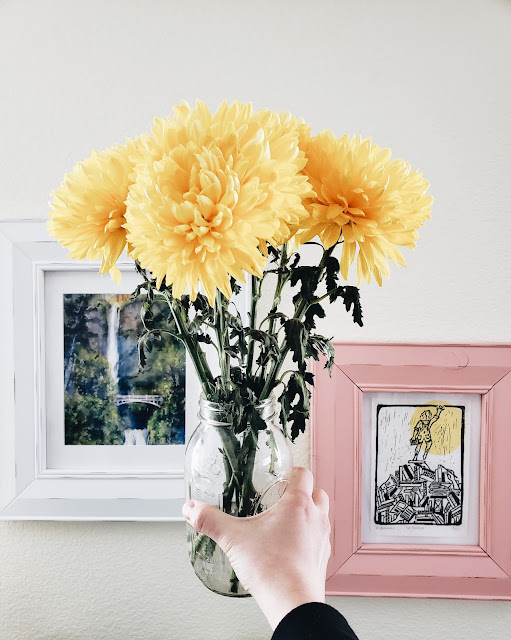Los Angeles Ballet
 |
| Photo Courtesy of Los Angeles Ballet |
As part of their 2016/2017 Season, Los Angeles Ballet presented three choreographic works from Balanchine, Barton, and Bournonville. Titled Modernists, the performance took place at the Redondo Beach Performing Arts Center on October 22 at 7:30pm.
Stravinsky Violin Concerto
George Balanchine originally choreographed this piece in 1972 for New York City Ballet’s Stravinsky Festival. Balanchine himself considered Stravinsky a close friend, and this work was an ode to their friendship. An abstract work, the work flitted between bursts of energy and drawn out moments of defying strength. The dance opened with various pairing of one female dancer and four males and then four female dancers and one male. Against the stark blue scythe and simple lighting, the dancers’ sharp movements stood out. Set to Stravinsky’s abrasive, yet beautiful, music, the dancers moved both with and around the notes. Syncopation and fast footwork took center stage in the opening section. The simple costuming – black leotards, skirts, and tights for the women, white shirts and black tights for the men – allowed for the focus to remain on the dancers’ exacting technique, without hiding any of their musculature.
After the opening sequence, the show moved to two Arias of intricate partnering. In the first, a female soloist was performing in place of a principal dancer, a last minute change as her name did not even make it into the program. Despite a few shaky steps while beginning, she calmed her nerves and performed a beautiful pas de deux with her partner. The second Aria featured two principle dancers, and their confidence emulated through their dancing. Both Arias utilized intertwined partnering and gymnastic elements not traditionally found in ballet; dancers performed backbends and quickly recovered to pirouettes. The mesh of ballet with contemporary and avant-garde elements echoed throughout the work. Finishing with an all-cast Capriccio, the dancers made use of the full stage space, constantly switching from left to right in elaborate formations. The finale demonstrated the strength and endurance of the cast, and the sections of unison proved the technical precision required in Balanchine’s choreography.
Untouched
Originally choreographed by Aszure Barton on Hubbard Street Dance Chicago, this work premiered in 2010. The curtains opened to reveal light shining through the fog on the stage, and a single curtain hung upstage with an opening for the dancers to enter and exit through. Throughout the piece, the lighting changed from blue to red tints, reflecting off the dancers’ costumes and the fog to create an eerie aura. The female dancers wore long dresses in rich colors matched by the male dancers’ satin shirts. Accompanied by orchestral music composed by Njo Kong Kie, Curtis Macdonald, and Lev Zhurbin, the dancers alternated between following the stringed instruments and the subtle piano below. The combination of the deep sound of the cello and the darkened stage allowed the dancers to dart in and out of the stage lights. Often, dancers continued to dance in the dark, but the light drew the audience’s attention to specific soloists.
Unison was the striking feature of this work; long sections of perfect unity placed throughout the dance were both visually and choreographically stunning. The seamless flow from unison into canons and solos made the work seem like one continuous thought. Among this continuity, however, the placement of dancers offered brief interruptions. Throughout the work, a single dancer would often break off from the group to remain in stillness onstage. This visual effect anchored the constant movement of the piece. Including pedestrian movement balanced the sections of highly technical choreography. The work ended as it began, with a single dancer in the curtain opening, illuminated by careful lighting.
Napoli
Los Angeles Ballet performed the Pas de Six and Tarantella from Act 3 of August Bournonville’s ballet Napoli. The scenes depict the joyous celebration of the wedding of Teresina and Gennaro. Clothed in simple, yet colorful, peasant skirts, the female dancers flirted with the males dressed in cummerbunds to the music of E.H. Helsted and H.S. Paulli. Beginning with the Pas de Six and variations, the dancers livened up the simple stage with their presence. Jumps, bouncing footwork, and moments of partnering emphasized the flirtatious nature of the dance. From the opening sequence, the work quickly flowed through the individual variations. A principal male performed the classic Gennaro variation, bounding across the stage with high jumps, and a soloist danced the role of Teresina, playfully manipulating the detailed, quick footwork of the variation.
The lively quality of the work carried through into the Tarantella. Utilizing elements of character and folk dancing, the dancers emulated the celebratory peasant dances with their flexed feet and swinging arms. Tambourines and clapping accentuated the orchestral music to further the folk-like quality. The work featured various different couples throughout, but joined again at the end in a rambunctious finale of unison. With swishing skirts and exciting jumps, the dancers perpetuated the dynamic movement until the curtain closed.
Overall, the entire show was stunning. I was thoroughly impressed with the difficulty of the choreography and the level at which it was performed. My favorite work was undoubtedly Untouched; it was so powerful that after it ended, the audience sat in silent contemplation for a few moments before beginning the applause. Having studied classical variations in a few summer camps, I also enjoyed watching the excerpts from Napoli because I learned Teresina’s variation and the Tarantella when I was much younger. Founded in 2004, Los Angeles Ballet is a rising force among the West Coast ballet companies, and I am interested to watch its evolution in the next few years.

Comments
Post a Comment